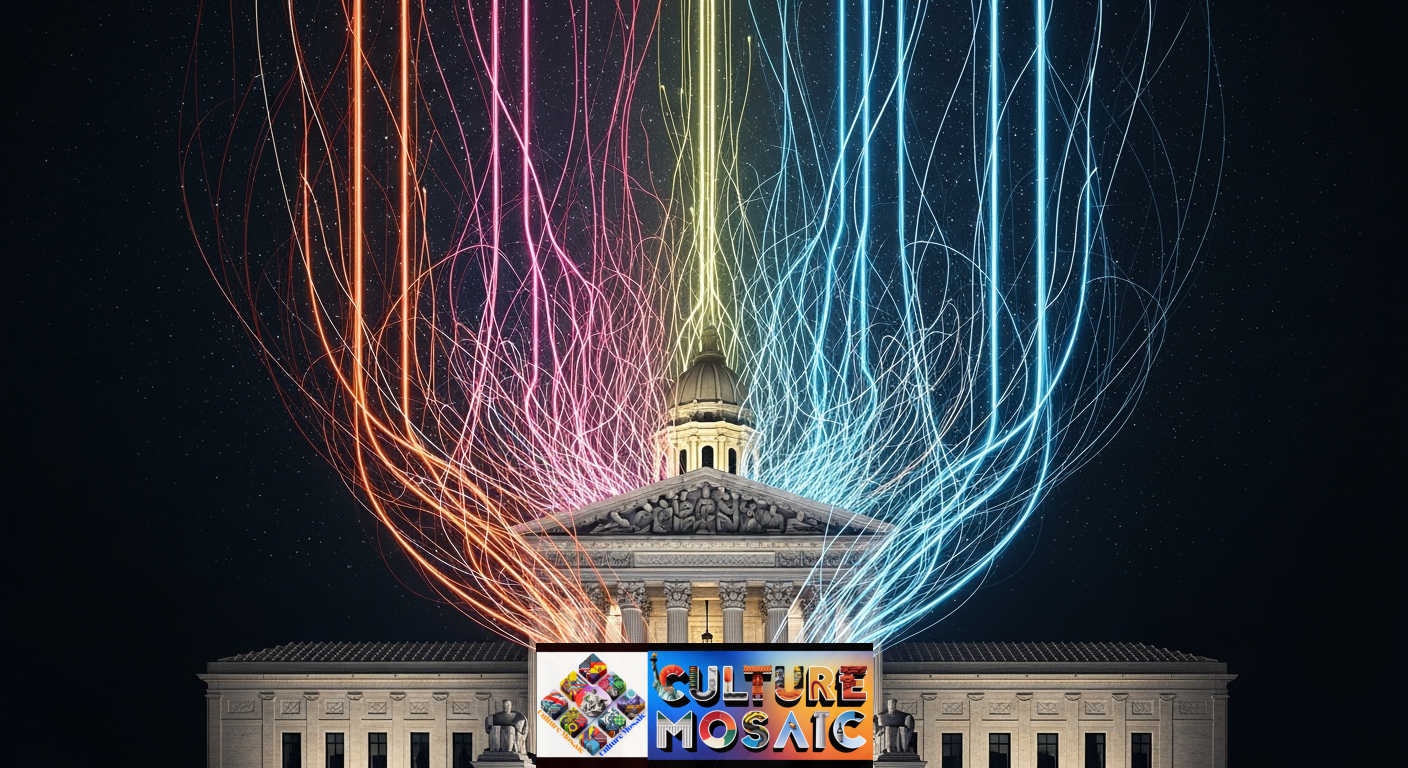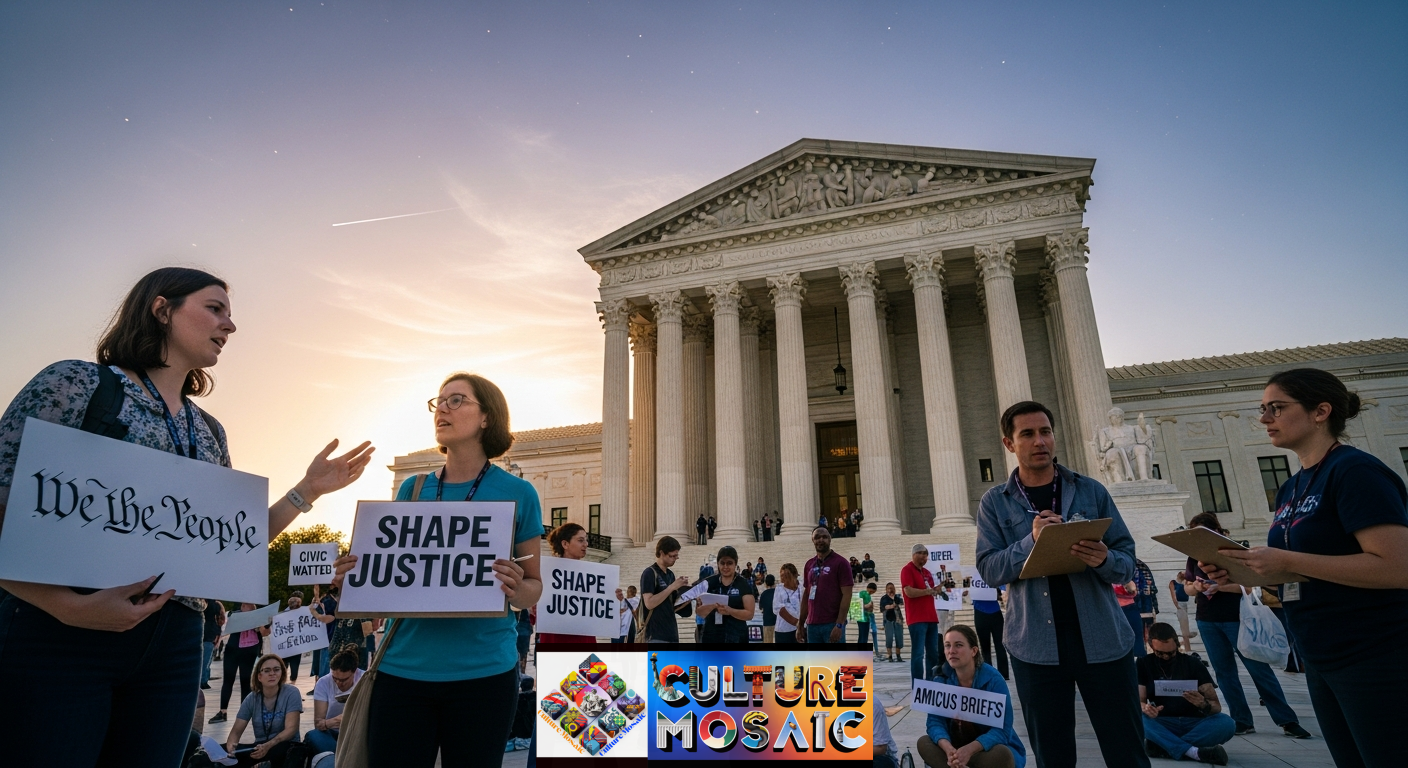Most Americans know the Supreme Court as the highest judicial body in the nation, but few realize just how much power ordinary citizens wield in shaping its decisions. The relationship between the Supreme Court and the power of civic voices represents one of democracy’s most dynamic partnerships—where individual advocacy, community organizing, and public participation directly influence the rulings that define American life.
Understanding the Supreme Court and the Power of Civic Voices
The Supreme Court doesn’t operate in a vacuum. While nine justices deliberate behind closed doors, their decisions reflect years of citizen engagement, public debate, and advocacy efforts that begin long before a case reaches their docket. This connection between the Supreme Court and the power of civic voices manifests through multiple channels: amicus curiae briefs, strategic litigation, public discourse, and grassroots movements that frame legal arguments and shift cultural understanding.
When we talk about civic voices in the context of the Supreme Court, we’re discussing the mechanisms through which everyday Americans—not just attorneys or politicians—participate in shaping constitutional interpretation and legal precedent.
How Civic Voices Reach the Supreme Court

The Amicus Brief: Democracy’s Secret Weapon
Perhaps the most direct connection between the Supreme Court and the power of civic voices lies in the amicus curiae brief—literally “friend of the court.” These written arguments allow individuals, organizations, advocacy groups, and concerned citizens to present their perspectives on cases before the Court, even when they’re not direct parties to the litigation.
The numbers tell a compelling story. In landmark cases, the Court often receives dozens or even hundreds of amicus briefs representing millions of Americans. When the Court considered marriage equality in Obergefell v. Hodges, more than 150 amicus briefs flooded in from civil rights organizations, religious groups, businesses, elected officials, and ordinary citizens. The justices cited these briefs repeatedly in their opinions, demonstrating how civic voices directly influenced their reasoning.
Any interested party can file an amicus brief with the Court’s permission—meaning your local advocacy group, professional association, or coalition of concerned citizens can formally present arguments that justices will read and consider.
Strategic Litigation: From Local Grievance to National Precedent
The relationship between the Supreme Court and the power of civic voices often begins with a single person challenging injustice. Rosa Parks stands firm: the moment she refuses to surrender her seat on the Montgomery bus. Oliver Brown challenged school segregation in Topeka. Ernesto Miranda questioned his interrogation. These weren’t prominent legal scholars or wealthy plaintiffs—they were ordinary Americans whose civic courage, supported by advocacy organizations, created constitutional landmarks.
This pattern continues today. The plaintiff in Bostock v. Clayton County, Gerald Bostock, was a Georgia child welfare coordinator fired for joining a gay softball league. His willingness to challenge workplace discrimination, supported by civil rights organizations, resulted in a 2020 Supreme Court ruling that extended employment protections to LGBTQ+ Americans nationwide.
Behind each landmark case stands a network of civic voices: community organizers who identified the injustice, attorneys who crafted the legal strategy, advocacy groups that provided resources, and citizens who offered support.
The Supreme Court and the Power of Civic Voices in Action

Three Cases That Changed America Through Citizen Advocacy
Citizens United v. FEC (2010): While controversial, this case demonstrates how civic voices from across the political spectrum influenced the Court’s thinking about free speech and campaign finance. Advocacy groups filed dozens of amicus briefs arguing different visions of democratic participation, and the ruling—regardless of one’s opinion—fundamentally reshaped how Americans engage in political discourse.
District of Columbia v. Heller (2008): The Second Amendment case that established an individual right to bear arms emerged from a coordinated civic effort. Gun rights advocates spent decades building legal arguments, filing test cases, and mobilizing public support. The case itself involved six ordinary DC residents who challenged the city’s handgun ban, supported by organizations that had cultivated civic voices around firearms policy for years.
Masterpiece Cakeshop v. Colorado Civil Rights Commission (2018): This case about a baker who refused to create a wedding cake for a same-sex couple illustrated how local civic disputes reach the nation’s highest court. Both sides mobilized their civic voices—LGBTQ+ advocates and religious freedom organizations filed competing amicus briefs, held rallies, and shaped public conversation. The narrow ruling reflected the Court’s attempt to balance these competing civic concerns.
How Your Civic Voice Can Influence the Supreme Court

Track the Docket Like a Pro
The Supreme Court maintains SCOTUSblog, an invaluable resource where citizens can follow cases, read oral arguments, and access opinions the day they’re released. The Court’s official website (supremecourt.gov) posts the docket, case schedules, and allows you to access briefs filed by all parties.
Understanding which cases the Court has agreed to hear—and which it has declined—offers insight into where civic advocacy might prove most effective. Each term, the Court receives approximately 7,000 petitions but hears only 70-80 cases, making the selection process itself a crucial moment for civic influence.
Join Organizations Filing Amicus Briefs
Major cases attract amicus briefs from diverse organizations representing millions of Americans. The ACLU, NAACP Legal Defense Fund, Chamber of Commerce, religious coalitions, environmental groups, and professional associations regularly file these briefs. By joining or supporting these organizations, your voice literally becomes part of the official record the justices review.
Support Strategic Litigation
Public interest law firms like the Institute for Justice, Lambda Legal, the Brennan Center for Justice, and others identify test cases that could establish favorable precedents. These organizations rely on civic support—both financial contributions and plaintiffs willing to challenge unjust laws.
Shape Public Discourse
Supreme Court justices insist they don’t follow public opinion, but they read newspapers, follow legal scholarship, and live in communities shaped by public debate. The Court’s evolving positions on issues from marriage equality to gun rights to privacy reflect, in part, shifting cultural consensus developed through civic conversation.
The Supreme Court and the Power of Civic Voices: Beyond the Headlines
While blockbuster constitutional cases grab headlines, the relationship between the Supreme Court and the power of civic voices extends to dozens of less-publicized decisions that profoundly affect daily life.
Consider Spokeo v. Robins (2016), which addressed when consumers could sue companies for incorrect credit reports. Consumer advocacy groups filed amicus briefs that influenced how the Court defined “concrete harm,” directly affecting millions of Americans dealing with data inaccuracies.
Or Biden v. Nebraska (2023), where the Court struck down the student loan forgiveness program. Both supporters and opponents of loan forgiveness mobilized their civic voices through amicus briefs, public demonstrations, and advocacy campaigns that framed the justices’ understanding of the issue’s stakes.
These cases demonstrate that civic voices matter across the ideological spectrum and on issues ranging from mundane regulatory questions to fundamental constitutional principles.
The Future of the Supreme Court and the Power of Civic Voices
As the Supreme Court faces questions about its legitimacy, ethical standards, and role in a polarized democracy, civic voices matter more than ever. Public engagement doesn’t mean pressuring justices to reach particular outcomes—it means ensuring the Court hears diverse perspectives, understands real-world impacts, and operates transparently within our democratic system.
The relationship between the Supreme Court and the power of civic voices represents democracy’s promise that ordinary citizens can influence even the most elite institutions. When you sign a petition, join an advocacy organization, support a test case, or simply educate yourself about pending decisions, you’re exercising constitutional rights that give vitality to abstract legal principles.
Taking Action: Your Role in Supreme Court Advocacy
Effective civic engagement with the Supreme Court requires understanding its timeline. Cases typically follow this trajectory:
- Petition Stage (September-June): The Court decides which cases to hear
- Briefing Stage (varies): Parties file arguments; amicus briefs submitted
- Oral Argument (October-April): Attorneys present to justices
- Decision (typically by June): Court issues opinions
You can engage at every stage—supporting organizations petitioning the Court, contributing to amicus efforts, attending oral arguments (limited public seating available), and responding to decisions through continued advocacy.
The Enduring Power of Civic Participation
The Supreme Court and the power of civic voices remain inseparably linked because American democracy demands it. Constitutional interpretation isn’t a mechanical process performed by isolated experts—it’s an ongoing conversation between legal principles and lived experience, between precedent and progress, between what the law says and what justice requires.
Your civic voice—whether expressed through formal legal channels or broader public engagement—forms an essential part of that conversation. The Court’s most consequential decisions, from Brown v. Board of Education to Obergefell v. Hodges, emerged from decades of civic advocacy that refused to accept injustice as inevitable.
Understanding the relationship between the Supreme Court and the power of civic voices transforms you from a passive observer of legal decisions into an active participant in constitutional democracy. That transformation represents the highest ideal of American citizenship.
FAQs On the Supreme Court and the Power of Civic Voices
Q: Can ordinary citizens file amicus briefs with the Supreme Court?
Yes, though most amicus briefs come from organizations, any individual or group can file with the Court’s permission or the parties’ consent. You’ll need to follow specific formatting rules and filing deadlines, and many citizens join existing organizational briefs rather than filing independently.
Q: How much influence do amicus briefs actually have on Supreme Court decisions?
Studies show justices frequently cite amicus briefs in their opinions, particularly those presenting technical expertise, real-world impacts, or perspectives not captured in the parties’ briefs. While no single brief determines outcomes, collectively they shape the Court’s understanding of a case’s broader implications.
Q: How can I attend Supreme Court oral arguments?
The Supreme Court reserves limited seating for the general public on a first-come, first-served basis. Visitors typically line up early on argument days (Mondays, Tuesdays, Wednesdays during sitting weeks). The Court also offers a three-minute viewing option for those who can’t wait through full arguments.
Q: Does public opinion influence Supreme Court justices?
Justices insist they decide based on law, not polls, and research confirms they don’t follow short-term opinion shifts. However, broader cultural changes and sustained civic movements do influence legal interpretation over time, as evidenced by the Court’s evolving positions on issues from segregation to same-sex marriage.
Q: What’s the most effective way for citizens to influence Supreme Court decisions?
The most effective approaches combine multiple strategies: supporting organizations that file amicus briefs, contributing to strategic litigation funds, educating yourself and others about pending cases, contacting elected officials about judicial appointments, and participating in the broader civic conversations that shape legal and cultural consensus on constitutional questions.

